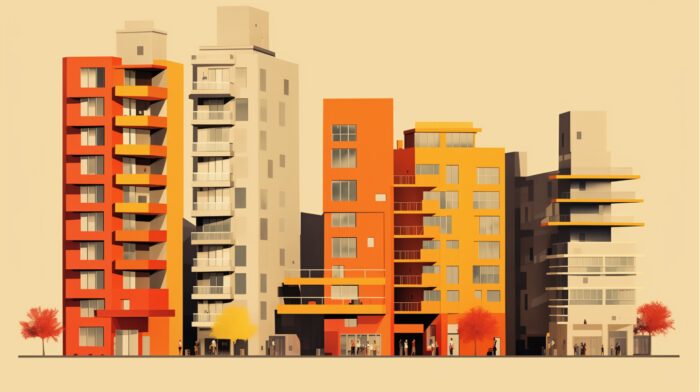If you have questions or want to learn more, please fill in the form or send us an email at:

Zoning Reform in Flint
In 2013, the City of Flint, Michigan, did something it had not done in over half a century. After organizing more than 300 community meetings — which engaged over 5,000 people in health centers, church basements, gymnasiums, senior centers, businesses, and more — the City Council unanimously adopted Imagine Flint, a comprehensive new plan that laid out a vision for the city’s future as a sustainable and inclusive urban place designed to support economic diversity. Imagine Flint crafted an entirely new land use vision for the city, one based on creating a series of dense, walkable neighborhood centers and allowing for a diverse mix of housing types by right, many of which had been previously banned.
To implement this vision, the City undertook another long-delayed action: a complete rewrite of the zoning ordinance. In 2017, after an additional four years of meetings, legal reviews, drafts, and edits, Flint’s Planning Commission adopted the first comprehensive rewrite of the city’s zoning code since Richard Nixon was president. Suffice it to say, much has changed in Flint and other midwestern industrial communities since the early 1970s.
Although the Planning Commission adopted this code, it still needed approval from the Flint City Council. But the Council did not pass the new code in 2017. Or 2018. Or 2019. Or 2020. For five years, it sat unadopted while other pressing policy priorities (including recovering from our water crisis, addressing vacant properties and crime, and dealing with the COVID-19 Pandemic) took precedence.
In late 2021, a group of residents got together in an under-renovation storefront, the kind that the old zoning code made so hard to build. Sitting on camping chairs in a room with partially installed kitchen equipment, we began to form a coalition of residents organized for a simple purpose: getting the City Council to finally adopt the long-delayed rewrite of our city’s zoning code.
In the national discussion around zoning reform, the focus has often been on fast-growing places where a change in land use law would unlock housing that is financeable and buildable today if only it were not banned. But Flint, Michigan is not facing the same challenges as superstar cities like New York and San Francisco. So why champion this effort? What broader relevance can this have?
Flint’s arc — from a manufacturing boomtown to a shrinking post-industrial Rust Belt city — is not unique. It’s also the story of Akron, Ohio, Pittsburgh, Pennsylvania, Saginaw, Detroit, and Pontiac, Michigan, just to name a few. In most of these towns, new homes and businesses are incredibly challenging to finance; often, they don’t sell for enough to cover the cost of their construction.
In June of 2024, the median sale price for a home in Flint was $78,500. Meanwhile, a standard 1,200-square-foot home can approach $300,000 in construction costs. This story is similar across the post-industrial midwest: Detroit (median sale price of $90,800), Akron (median sale price of $140,000), and Youngstown (median sale price $64,300) all face similar challenges.
Building any new housing can require a mix of complex financing, including tax capture programs and subsidy from public, nonprofit, and private sources. Any barrier that adds cost or causes delay can prevent new homes from being built entirely. Additionally, working-class residents of the above cities often lack access to the capital that would make projects across the spectrum, from larger new construction to small one or two-unit projects, and even an Accessory Dwelling Unit (ADU) or home renovation feasible in other places. This means that in places like this, having simple, flexible, predictable rules is essential to building inclusive communities.
And so, in late 2021, Flint Residents for Stronger Neighborhoods began diligently advocating for the passage of zoning reform. We went to neighborhood association meetings in school classrooms, spoke at our local public library, and sat down with our city’s planning director and each member of our local city council.
Our coalition built out a social media campaign asking folks if they knew the top TV shows in 1974 (the last time the zoning code had been comprehensively updated) and if they felt that, just maybe, the situation in Flint might be a little different than it was then. We spoke at City Council meetings, pleading with elected leadership to adopt the city’s new zoning code. Our tremendous allies in the Planning Department, on Council, and in the Mayor’s office also went to work explaining the new code to decision-makers and community members.
The new code promised to make it easier for Flintstones (the best city demonym, in my opinion) to invest in their own properties and neighborhoods. It allowed ADUs in nearly all residential neighborhoods and permitted mixed-use developments in much of Flint by-right, abolished parking minimums in our downtown, and cut them in half in much of the rest of our city—with generous by-right waivers in many circumstances. It further simplified the development process by vesting some waiver authority that had previously been with the planning commission instead of with the staff zoning coordinator. This allows the zoning coordinator to grant some waivers without the need for additional planning commission reviews, meaning that a homeowner or mom-and-pop landlord could more easily navigate the permitting process without needing to pay permit fees for multiple reviews, attend multiple meetings, and see delay after delay drive up their costs.
In July of 2022, after nearly a year of committed advocacy, the Flint City Council voted to adopt the new zoning code. Even more exciting, a former FRSN member who had worked to open a new business in a vacant storefront in the Carriage Town Neighborhood (dealing with, you guessed it, outdated parking requirements among other challenges) was appointed by Mayor Neeley to be the Director of Planning and Development, responsible for overseeing all zoning, city planning, building inspections, and more.
While Flint’s overhauled zoning code has only been in effect since October 2022, we have already seen it speed up the development process. Since the new code was adopted, the average time to process a site plan approval in Flint has gone from 260 to 45 business days.
Building on this success, our Council adopted a widespread commercial corridor upzoning in December of 2023. To make residential development even easier, the City is now working to follow the path of other innovative post-industrial communities like South Bend, Indiana by adopting pre-approved building plans that smaller developers could easily proceed with.
None of this would have been possible had committed advocates not organized and raised the political salience of land use reform. Zoning is not usually at the forefront of most folks’ minds, and the only way to put it on the agenda is through organized, coordinated, and consistent campaigns.
In any community, the ability of a group of committed residents to make change is profound. So be the person who shows up to your local planning commission and city council meetings, and help make change.
Joel Arnold is a Flint resident and urban planner.



